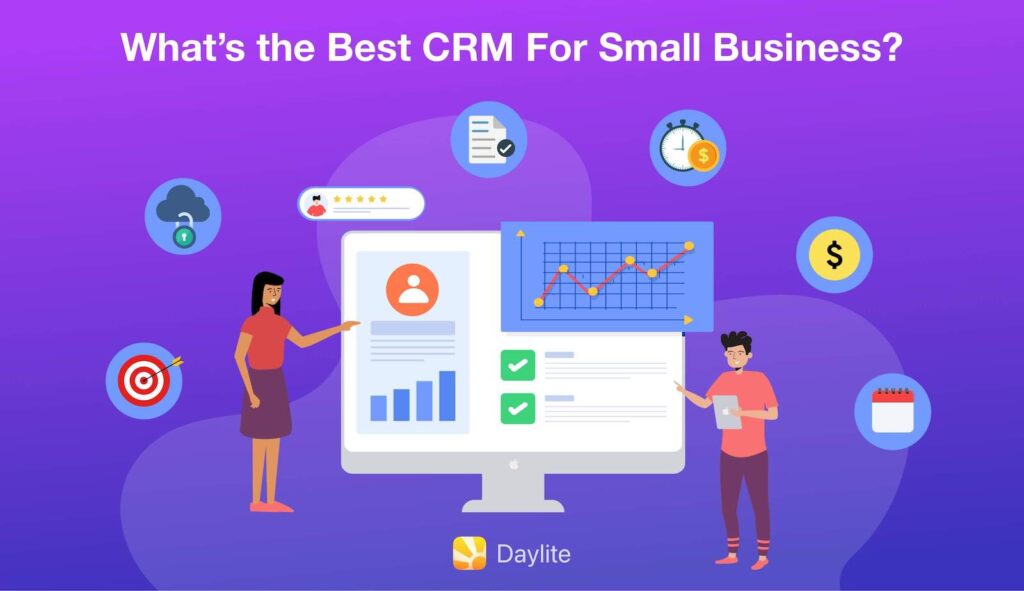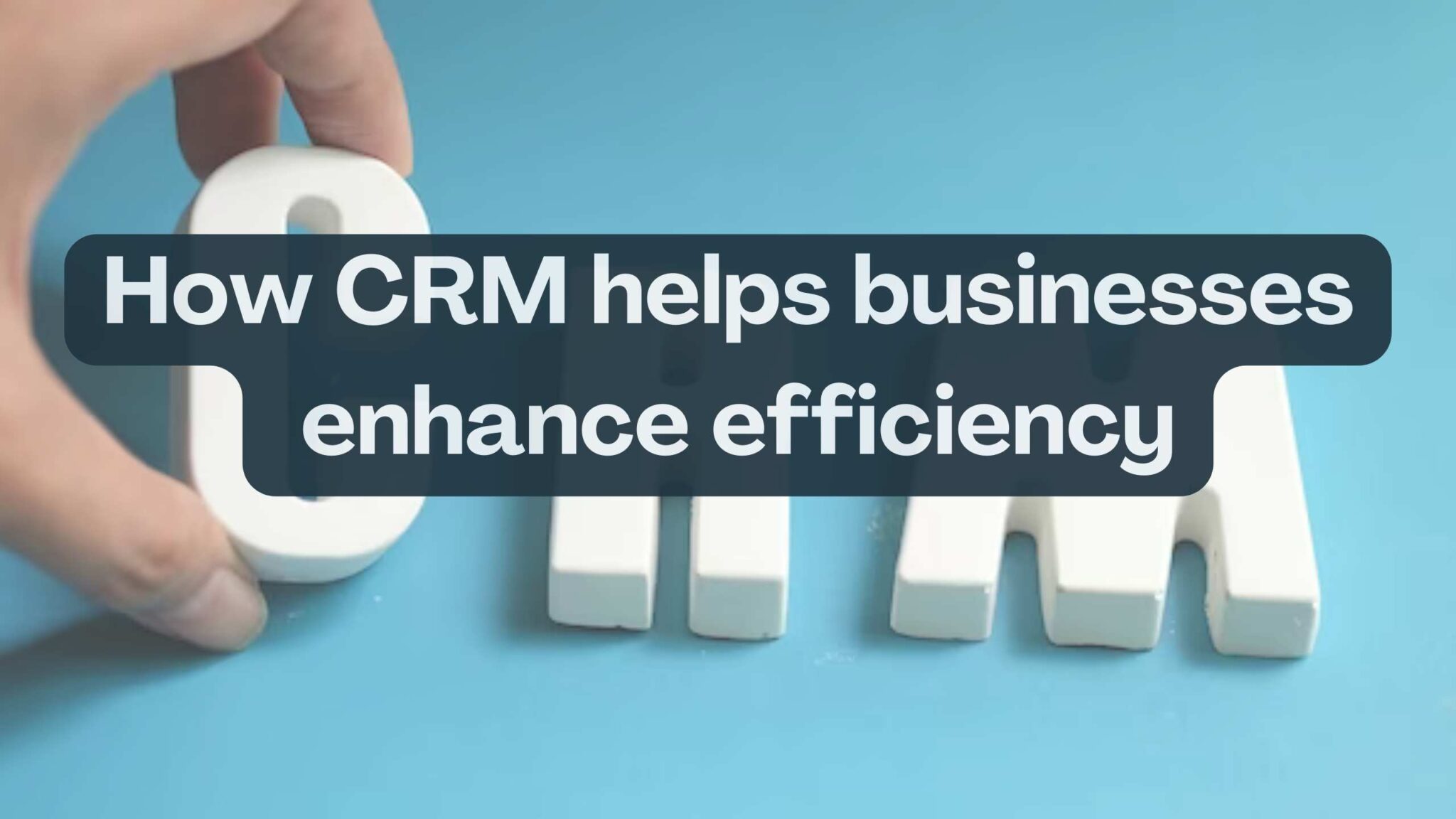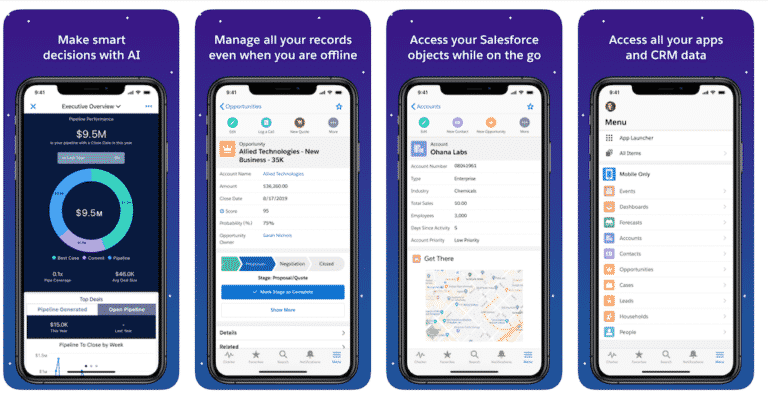The Ultimate Small Business CRM Setup Guide: From Zero to Customer Relationship Rockstar

So, you’re a small business owner, huh? Congratulations! You’ve taken the plunge, you’re chasing your dreams, and you’re probably juggling a million things at once. One of those things, if you’re smart, is customer relationship management (CRM). But the thought of setting up a CRM system can feel like trying to herd cats. Fear not, fellow entrepreneur! This comprehensive small business CRM setup guide will walk you through every step, from the basics to advanced customization, so you can transform your business into a customer-centric powerhouse. We’ll break down everything in plain English, without the jargon overload, and get you on your way to building stronger customer relationships and boosting your bottom line.
Why Does Your Small Business Need a CRM?
Before we dive into the nitty-gritty, let’s address the elephant in the room: why bother with a CRM in the first place? In the early days of your business, you might think you can manage everything with spreadsheets and a good memory. But as your customer base grows, that approach quickly becomes unsustainable. Here’s why a CRM is a non-negotiable for small businesses:
- Improved Customer Relationships: A CRM centralizes all your customer data – contact information, purchase history, communication logs, and more. This 360-degree view allows you to personalize interactions, understand their needs, and provide exceptional service. Happy customers are loyal customers.
- Increased Sales: By tracking leads, managing your sales pipeline, and automating follow-ups, a CRM helps you close more deals and accelerate your sales cycle. It’s like having a tireless sales assistant working 24/7.
- Enhanced Efficiency: Automate repetitive tasks like data entry, email marketing, and appointment scheduling, freeing up your valuable time to focus on strategic initiatives and growing your business. Time is money, and a CRM helps you save both.
- Better Organization: Say goodbye to scattered spreadsheets and lost emails. A CRM provides a centralized hub for all your customer interactions, making it easy to find information and collaborate with your team.
- Data-Driven Decisions: CRM systems provide valuable insights into your customer behavior, sales performance, and marketing effectiveness. Use this data to make informed decisions and optimize your strategies.
Choosing the Right CRM for Your Small Business
The CRM market is vast and varied. Choosing the right one can feel overwhelming. Don’t worry, we’ll break it down. Here’s what you need to consider when selecting a CRM for your small business:
1. Needs Assessment
Before you start shopping, take a good, hard look at your business needs. What are your goals? What are your pain points? What features are essential? Consider these questions:
- What are your primary business goals? Are you focused on increasing sales, improving customer service, or streamlining marketing efforts?
- What are your biggest challenges? Are you struggling with lead management, customer communication, or data organization?
- What features are essential? Do you need contact management, sales pipeline tracking, email marketing integration, or customer support ticketing?
- How many users will need access? This will affect pricing and user management capabilities.
- Do you need mobile access? If your team is always on the go, mobile CRM functionality is a must.
- What integrations do you need? Consider your existing tools, such as email marketing platforms, accounting software, and social media channels.
2. Budget
CRM pricing varies widely, from free options to enterprise-level solutions. Determine your budget upfront and stick to it. Consider the following cost factors:
- Subscription fees: Most CRMs operate on a monthly or annual subscription basis, usually per user.
- Implementation costs: Some CRMs require professional setup and data migration, which can add to the initial cost.
- Training costs: Budget for training your team on how to use the CRM effectively.
- Add-ons and integrations: Some features and integrations may require additional fees.
3. Features
Prioritize the features that align with your needs. Key features to look for include:
- Contact Management: Store and organize customer contact information, including names, addresses, phone numbers, and email addresses.
- Lead Management: Track and manage leads through your sales pipeline, from initial contact to conversion.
- Sales Automation: Automate repetitive sales tasks, such as email follow-ups and task creation.
- Sales Pipeline Management: Visualize your sales process and track the progress of deals through each stage.
- Email Marketing Integration: Integrate with your email marketing platform to send targeted campaigns and track results.
- Reporting and Analytics: Generate reports and analyze data to track your performance and make data-driven decisions.
- Customer Support Ticketing: Manage customer inquiries and resolve issues efficiently.
- Mobile Access: Access your CRM data and functionality on the go.
- Integrations: Integrate with other tools you use, such as email marketing, accounting software, and social media platforms.
4. Ease of Use
A CRM is only useful if your team actually uses it. Choose a system that is intuitive, user-friendly, and easy to learn. Consider these factors:
- User interface: Is the interface clean, uncluttered, and easy to navigate?
- Customization options: Can you customize the system to fit your specific needs?
- Training and support: Does the vendor offer training resources and customer support?
5. Scalability
Choose a CRM that can grow with your business. As your customer base and team expand, your CRM should be able to handle the increased workload and complexity.
Popular CRM Options for Small Businesses
Here are some popular CRM options for small businesses, along with their key features and pricing:
- Zoho CRM: A feature-rich CRM with a free plan for up to three users, making it a great starting point. Offers robust sales automation, marketing automation, and customer support features. Pricing starts at $14 per user per month.
- HubSpot CRM: A free CRM that is incredibly user-friendly and offers a wide range of features, including contact management, sales pipeline tracking, and email marketing. Paid plans offer advanced features like sales automation and reporting.
- Freshsales: A sales-focused CRM with a user-friendly interface and features like lead scoring, sales automation, and phone integration. Pricing starts at $15 per user per month.
- Pipedrive: A sales-focused CRM with a visual interface that makes it easy to track your sales pipeline. Known for its simplicity and ease of use. Pricing starts at $12.50 per user per month.
- Salesforce Essentials: A scaled-down version of the industry-leading Salesforce CRM, designed specifically for small businesses. Offers a wide range of features, including contact management, lead management, and sales automation. Pricing starts at $25 per user per month.
Step-by-Step Guide to Setting Up Your Small Business CRM
Alright, you’ve chosen your CRM. Now, let’s get down to business. Here’s a step-by-step guide to setting up your CRM and getting it ready to work for you:
1. Create Your Account and Choose Your Plan
This is the easy part. Go to the CRM provider’s website, sign up for an account, and choose the plan that best fits your needs and budget. Most providers offer free trials, so take advantage of them to test the waters before committing.
2. Customize Your Settings
Once you’re logged in, it’s time to personalize your CRM. This is where you tailor the system to your specific business needs. Key settings to customize include:
- Company Information: Enter your company name, address, logo, and other relevant details.
- User Management: Add your team members and assign them appropriate roles and permissions. Decide who has access to what information.
- Currency and Time Zone: Set your currency and time zone to ensure accurate data and reporting.
- Language: If you’re not using English, select your preferred language.
3. Import Your Data
This is a crucial step. You need to import your existing customer data into your CRM. This typically involves importing data from spreadsheets, databases, or other systems. Here’s how to do it:
- Prepare Your Data: Clean and organize your data before importing it. Make sure your data is in a consistent format and that all fields are correctly labeled.
- Choose Your Import Method: Most CRMs allow you to import data via CSV files, Excel spreadsheets, or direct integrations with other systems.
- Map Your Fields: Map your data fields to the corresponding fields in your CRM. This ensures that your data is imported correctly.
- Test Your Import: Before importing your entire data set, test the import with a small sample of data to ensure that everything is working as expected.
- Import Your Data: Once you’re confident that your data is formatted correctly, import your entire data set.
4. Customize Your Fields and Objects
CRMs come with default fields and objects (e.g., contacts, leads, deals), but you’ll likely need to customize them to fit your specific business processes. This is where you add custom fields, modify existing fields, and create custom objects to store the data that is most important to your business.
- Custom Fields: Add custom fields to store specific information about your customers, such as industry, interests, or preferred communication methods.
- Modify Existing Fields: Change the labels, data types, or validation rules of existing fields to match your needs.
- Custom Objects: Create custom objects to track specific data, such as projects, products, or support tickets.
5. Configure Your Sales Pipeline
If you’re using your CRM for sales, configuring your sales pipeline is essential. This involves defining the stages of your sales process and setting up the rules for moving leads through each stage. Consider these things:
- Define Your Sales Stages: Identify the stages of your sales process, such as lead, qualified, proposal, negotiation, and closed won.
- Create Deal Stages: Set up deal stages to track the progress of your sales deals.
- Automate Deal Movement: Automate the movement of deals through your pipeline based on specific actions or criteria.
- Set Up Deal Probability: Assign a probability to each deal stage to forecast your sales.
6. Integrate with Other Tools
To get the most out of your CRM, integrate it with your other business tools, such as email marketing platforms, accounting software, and social media channels. This will streamline your workflows and improve data accuracy.
- Email Marketing Integration: Connect your CRM to your email marketing platform to send targeted campaigns and track results.
- Accounting Software Integration: Integrate your CRM with your accounting software to track invoices, payments, and other financial data.
- Social Media Integration: Integrate your CRM with your social media channels to track social media interactions and engage with your customers.
- Other Integrations: Integrate with other tools you use, such as project management software, customer support platforms, or e-commerce platforms.
7. Set Up Automation
Automation is one of the biggest benefits of using a CRM. Automate repetitive tasks to save time and improve efficiency. Examples include:
- Automated Email Follow-ups: Automatically send follow-up emails to leads and customers.
- Task Creation: Automatically create tasks for sales reps based on specific actions or criteria.
- Lead Routing: Automatically route leads to the appropriate sales reps based on territory, industry, or other criteria.
- Workflow Automation: Automate more complex workflows, such as sending a welcome email to new customers or creating a support ticket when a customer submits a request.
8. Train Your Team
Your CRM is only as effective as the people who use it. Train your team on how to use the system effectively. Provide training resources, such as user manuals, video tutorials, and live training sessions. Make sure everyone understands the importance of using the CRM consistently and accurately.
9. Test and Refine
After you’ve set up your CRM, take some time to test it and refine your settings. Run test reports, review your data, and make any necessary adjustments. Continuously monitor your CRM performance and make improvements as needed.
10. Monitor and Evaluate
Regularly monitor your CRM data and evaluate your performance. Track key metrics, such as sales conversion rates, customer satisfaction, and marketing ROI. Use this data to identify areas for improvement and optimize your strategies.
Best Practices for CRM Success
Setting up your CRM is just the beginning. To get the most out of your system, follow these best practices:
- Data Accuracy: Ensure that your data is accurate and up-to-date. Regularly clean and update your data to maintain its integrity.
- Data Consistency: Establish data entry standards and guidelines to ensure consistency across your team.
- User Adoption: Encourage user adoption by providing training, support, and incentives.
- Regular Backups: Back up your CRM data regularly to protect against data loss.
- Security Measures: Implement security measures to protect your data from unauthorized access.
- Regularly Review and Optimize: Periodically review your CRM settings and workflows to ensure they are still meeting your needs.
Troubleshooting Common CRM Setup Issues
Even with the best intentions, you may encounter some hiccups during your CRM setup. Here are some common issues and how to resolve them:
- Data Import Errors: Data import errors are common. Double-check your data format, field mapping, and import settings.
- User Adoption Challenges: If your team is reluctant to use the CRM, provide additional training, address their concerns, and highlight the benefits.
- Integration Problems: If you’re having trouble integrating with other tools, review the integration settings and consult the vendor’s documentation.
- Performance Issues: If your CRM is slow, optimize your data, reduce the number of customizations, and consider upgrading your plan.
- Data Loss: Always back up your data regularly to prevent data loss.
Maximizing Your CRM Investment: Beyond Setup
Once your CRM is up and running, the real work begins. Here’s how to maximize your investment and reap the rewards:
1. Embrace the Power of Segmentation
Don’t treat all your customers the same. Segment your audience based on demographics, behavior, purchase history, and other criteria. This allows you to personalize your marketing and sales efforts, leading to higher engagement and conversion rates.
2. Leverage Automation for Efficiency
Automation isn’t just about saving time; it’s about improving efficiency and consistency. Automate as many tasks as possible, from lead qualification to email follow-ups. This frees up your team to focus on more strategic initiatives.
3. Analyze Data for Insights
Your CRM is a treasure trove of data. Use it to track key metrics, identify trends, and gain insights into your customer behavior. This data can inform your marketing, sales, and customer service strategies.
4. Foster a Customer-Centric Culture
Your CRM should be the heart of your customer-centric approach. Use it to understand your customers’ needs, personalize interactions, and provide exceptional service. Make customer satisfaction a top priority.
5. Continuously Optimize and Adapt
Your CRM is not a set-it-and-forget-it tool. Continuously monitor your performance, analyze your data, and make adjustments as needed. Stay up-to-date on the latest CRM best practices and technologies.
The Future of CRM for Small Businesses
CRM technology is constantly evolving. Here are some trends to watch out for:
- Artificial Intelligence (AI): AI-powered CRMs can automate tasks, provide insights, and personalize customer interactions.
- Mobile CRM: Mobile CRM continues to grow in importance as businesses become more mobile.
- Integration with Emerging Technologies: CRM systems will continue to integrate with new technologies, such as chatbots, voice assistants, and the Internet of Things (IoT).
- Focus on Customer Experience: CRM systems will increasingly focus on providing a seamless and personalized customer experience.
By embracing these trends, you can stay ahead of the curve and ensure that your CRM remains a valuable asset for your small business.
Conclusion: CRM – Your Small Business’s Secret Weapon
Setting up a CRM for your small business is an investment in your future. It’s an investment in stronger customer relationships, increased sales, and enhanced efficiency. While the initial setup may seem daunting, following this guide will help you navigate the process step-by-step. Remember to choose the right CRM for your needs, customize it to your specific requirements, and train your team on how to use it effectively. By embracing best practices and continuously optimizing your CRM, you can transform your small business into a customer-centric powerhouse and achieve lasting success. So, what are you waiting for? Get started today, and watch your business thrive!





